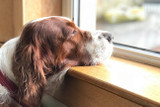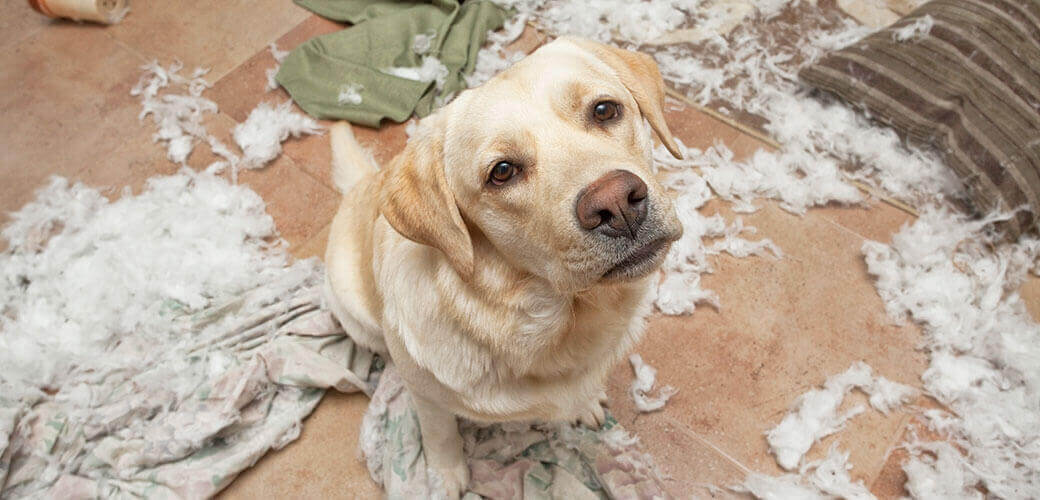Behavior 101: Separation Anxiety

Separation anxiety in dogs goes beyond the occasional mournful whimper when you leave the house or the mysterious appearance, now and then, of a bedroom slipper under the kitchen table when you return. Unlike a little mischief when your dog is left alone, separation anxiety is the result of real stress. If your dog exhibits some of these behaviors when you’re not there, he is most likely suffering from separation anxiety:
- Excessive barking or howling.
- Destructive acts, like chewing furniture, pillows or clothing and frantic scratching on the doors or windows.
- Indoor ‘accidents’–urinating or defecating in the house.
- Excessive salivation, drooling or panting.
- Intense pacing.
- If crated, escape attempts so desperate, the dog may actually harm himself.
These behaviors aren’t occasional; they happen every time you leave and only in your absence. In fact, they may begin even before you leave; when he sees you put on a coat or take out the car keys.
What Causes Separation Anxiety in Dogs?
It’s unclear why some dogs are more prone to separation anxiety. There’s some anecdotal evidence to suggest it’s more common in shelter dogs, who may have been abandoned or suffered the loss of an important person in the past. Some breeds may also be more prone to it, especially the more-people oriented breeds. Life changes can also cause separation anxiety, including a sudden change in the schedule, a move to a new house or the sudden absence of a family member, whether it’s a divorce, a death in the family or even a child going off to college.
Helping your dog overcome mild separation anxiety:
Counterconditioning can often resolve mild cases of separation anxiety. This approach involves creating positive, relaxing associations with being left alone, often using a combination of treats and toys to distract your dog from his habitual stress response to your departure. Puzzle toys are an effective counterconditioning tool because they require focused attention and deliver a tasty reward over an extended period of time. Follow these simple steps:
- Keep your entrances and exits calm and peaceful.
- Place your dog’s favorite treat inside his puzzle toy.
- Give your dog the treat just prior to your exit.
- Start with short departures to gauge your dog’s response.
- Extend the length of separations over time.
- Always remove the puzzle toy as soon as you return home.
- Provide companionship for your dog when you are at work by having a friend spend time with him, hiring a dog-sitter, or taking him to doggie day care.
Stay tuned for our next blog about the benefits of doggy daycare services and find out how taking your dog to daycare play dates can help with your dogs separation anxiety and more!



